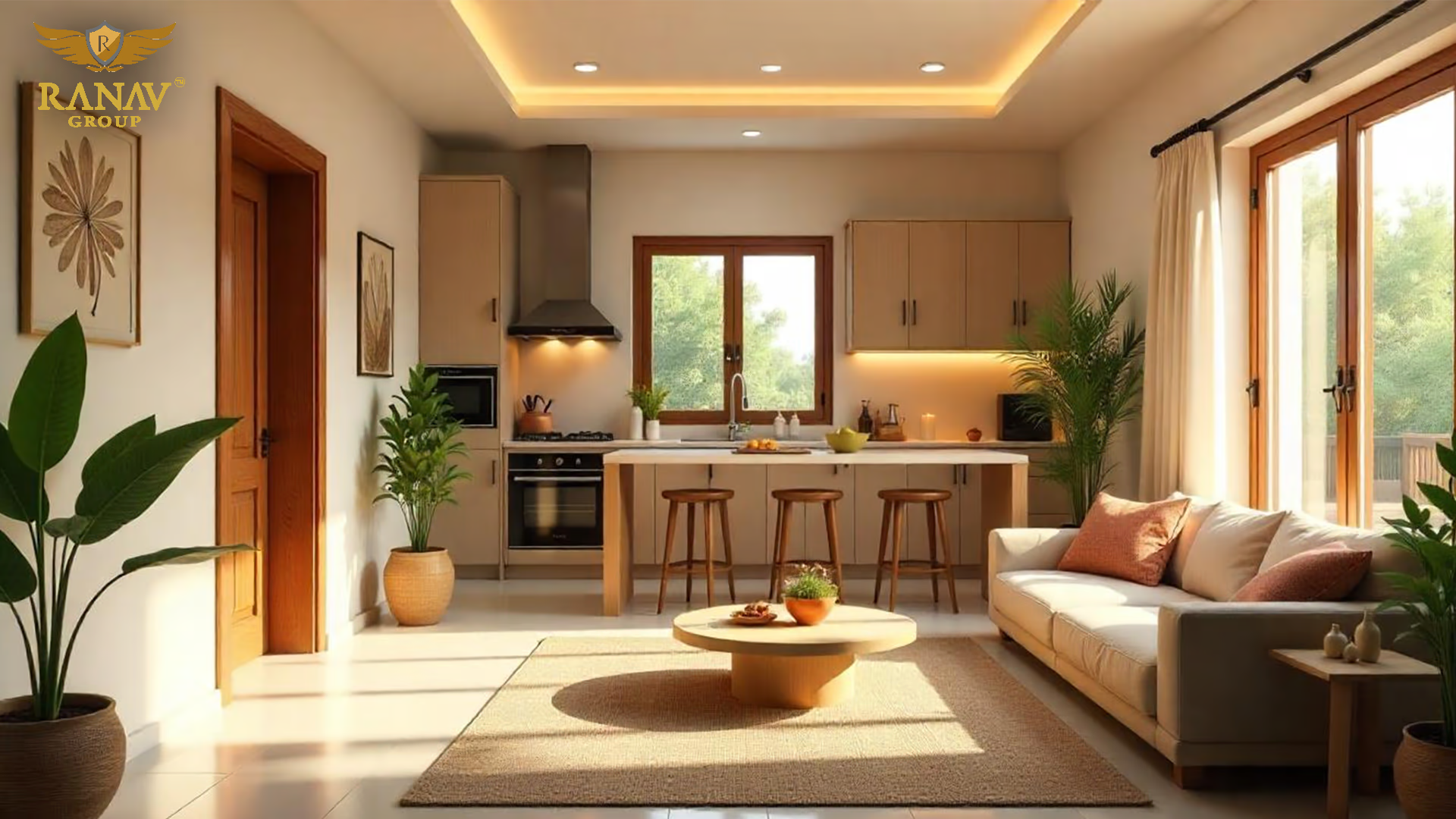Developing your home such that it feels healthy and comfortable, Vastu is a more seasoned Indian approach to architecture that holds principles that are time-tested in aligning homes with the natural energy forces.
With just a few Vastu principles, you can transform your home into one of balance, better health, and prosperity, as these will not necessarily involve any major changes. Here are easy and effective Vastu techniques for each area, such as your home.
Importance of Vastu in Contemporary Homes
In today's fast-moving life, Vastu is something that is going to bring serenity and clarity into the living space. It emphasizes direction, such as the placement of rooms, and these five elements they include earth, water, fire, air, and space. Hence, Vastu balanced principles, while time-honored, can also be deemed lively and appropriate for the fire-inhabited apartments and their tiny plot home buildings.
Entrance and Main Door Vastu
This is the main entrance through which energy enters into the home. As per Vastu, this should be in the north, east, or northeast directions since they are the ones at the doorsteps for positive energy and success. Also, you should keep the entrance cleansed, lit, and devoid of clutter to be favorable to hide opportunity and goodwill. No shoe racks or dustbins should be kept near the main entrance.
Vastu for Your Living Room
Also, the living room should stay in the east or north part of the house. Heavy furniture, such as sofas, shall then be located at western or southern parts with respect to the house. The northeastern part should be kept free and light. The external appearance shall be as much light as possible, with warm-toned walls. Balance can be made using family photos or homemade art in the south-west zone.
Vastu Tips for Kitchen Layout
The kitchen represents the fire element and should be placed in the southeast direction. If that is not possible, the northwest direction is the second-best option. You should cook facing east and avoid placing the stove directly in front of the kitchen door. Keep water sources like the sink or water purifier separate from the stove to avoid clashing elements.
Bedroom Vastu for Restful Sleep
For master bedrooms, the ideal location is the southwest part of the house. This zone provides stability and restful sleep. Always sleep with your head towards the south or east for better health. Avoid mirrors directly facing the bed as they can disturb sleep. Choose earthy tones for the walls and soft lighting to enhance peace.
Children’s Room and Study Area Vastu
Children’s rooms are best placed in the west or northwest direction. The study table should be positioned so that the child faces east or north while studying. Avoid placing the study desk directly below a beam or against the bathroom wall. Use vibrant but soothing colors like green or light blue to improve focus and reduce anxiety.
Bathroom and Toilet Vastu
The bathroom should be in the west or northwest part of the home. Toilets in the northeast should be avoided as they can drain positive energy. Always keep the toilet door shut and the bathroom dry and ventilated. Use exhaust fans or air purifiers to maintain airflow and hygiene.
Prayer Room or Meditation Space Vastu
If you have a prayer or meditation room, place it in the northeast part of your house. This direction is spiritually powerful and ideal for connecting with higher energy. Keep the space clean and minimal. Use white, yellow, or light blue colors to create a serene environment.
Balcony and Open Spaces
Balconies are best in the northeast, north, or east directions. They introduce fresh energy and sunlight. Avoid placing heavy furniture or storage items in balconies. Add indoor plants or small water fountains in the northeast to boost positive energy and attract abundance.
Vastu Tips for Indoor Plants
Indoor plants add life and beauty to your home while also purifying the air. According to Vastu, tulsi should be placed in the north or east. People consider bamboo and money plants lucky when placed in the southeast. Avoid thorny plants like cactus, as they can introduce negativity.
Lighting and Ventilation as per Vastu
Natural light and proper ventilation are key to a Vastu-compliant home. Ensure windows open towards the north or east for sunlight. Use warm, ambient lighting in the evening to maintain a peaceful aura. Avoid harsh white lights in the bedroom and prayer rooms.
Declutter for Energy Flow
Clutter blocks the free flow of energy. Make decluttering a regular habit, especially in corners and behind doors. Store unused items neatly and remove broken furniture or electronics from the home. A clean and open space naturally invites more positivity.
How Ranav Groups Can Help You with Vastu Based Home Design
Ranav Groups understands the importance of a home that supports health, happiness, and spiritual balance. They offer thoughtfully designed residential spaces that integrate Vastu principles seamlessly into modern architecture.
Ranav Groups ensures that the home layout is aligned with energy-efficient and Vastu-compliant planning, whether you are buying a new home or renovating your current space. Their expertise lies in delivering homes that feel not just luxurious but also harmonious and aligned with your values.
Final Thoughts
Vastu is more than just architecture; it is a way of living in sync with natural energies. These simple Vastu tips are easy to implement and do not require major structural changes. From room placements to color choices and decor, aligning your home with Vastu can help you achieve peace of mind and better overall well-being.
By following these ancient yet practical tips, you can create a home that supports your goals, relationships, and health. Whether you are designing a new space or refreshing an old one, consider how the principles of Vastu Shastra can guide your decisions. After all, a balanced home leads to a balanced life.
Explore Our Recent Blogs
